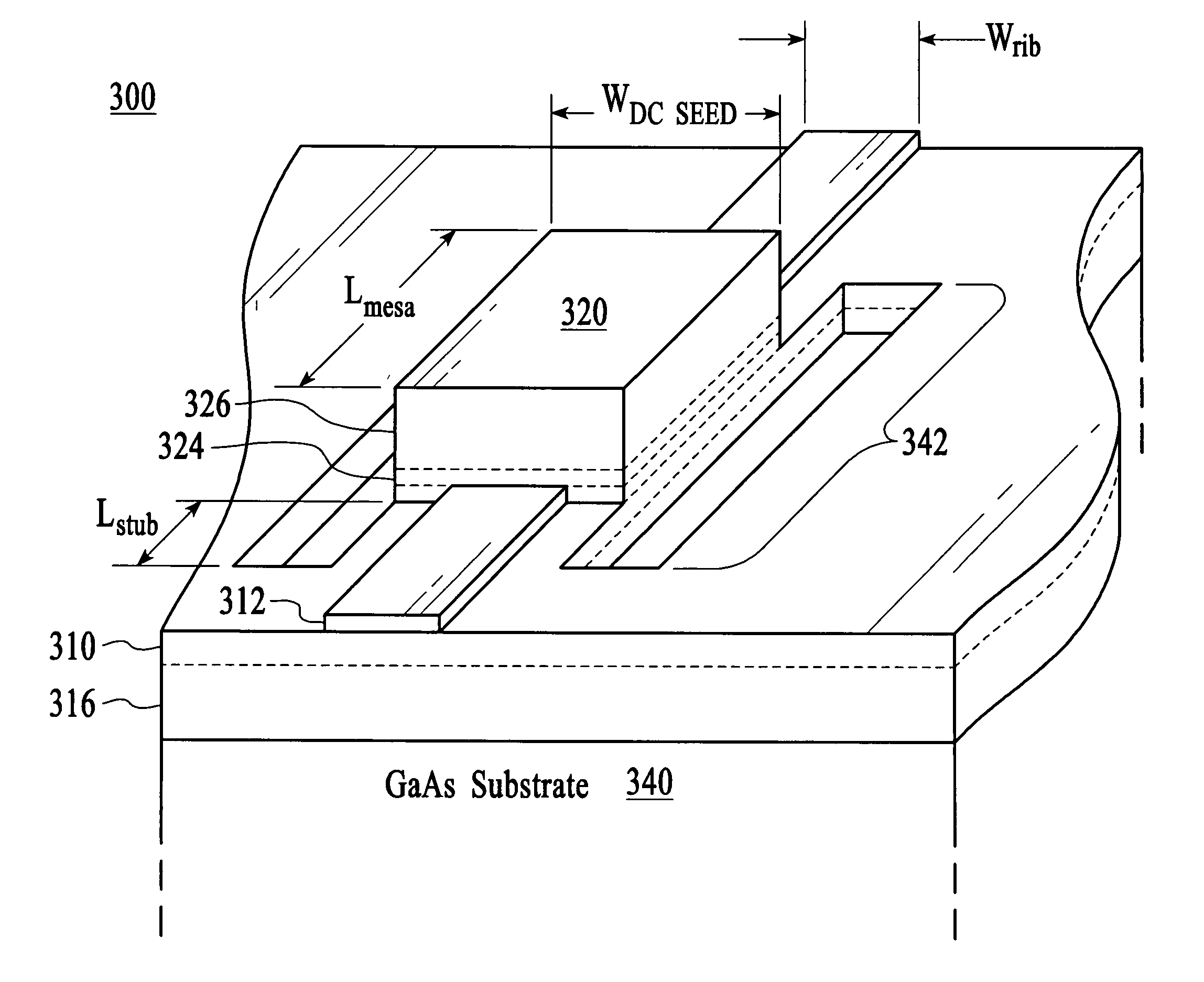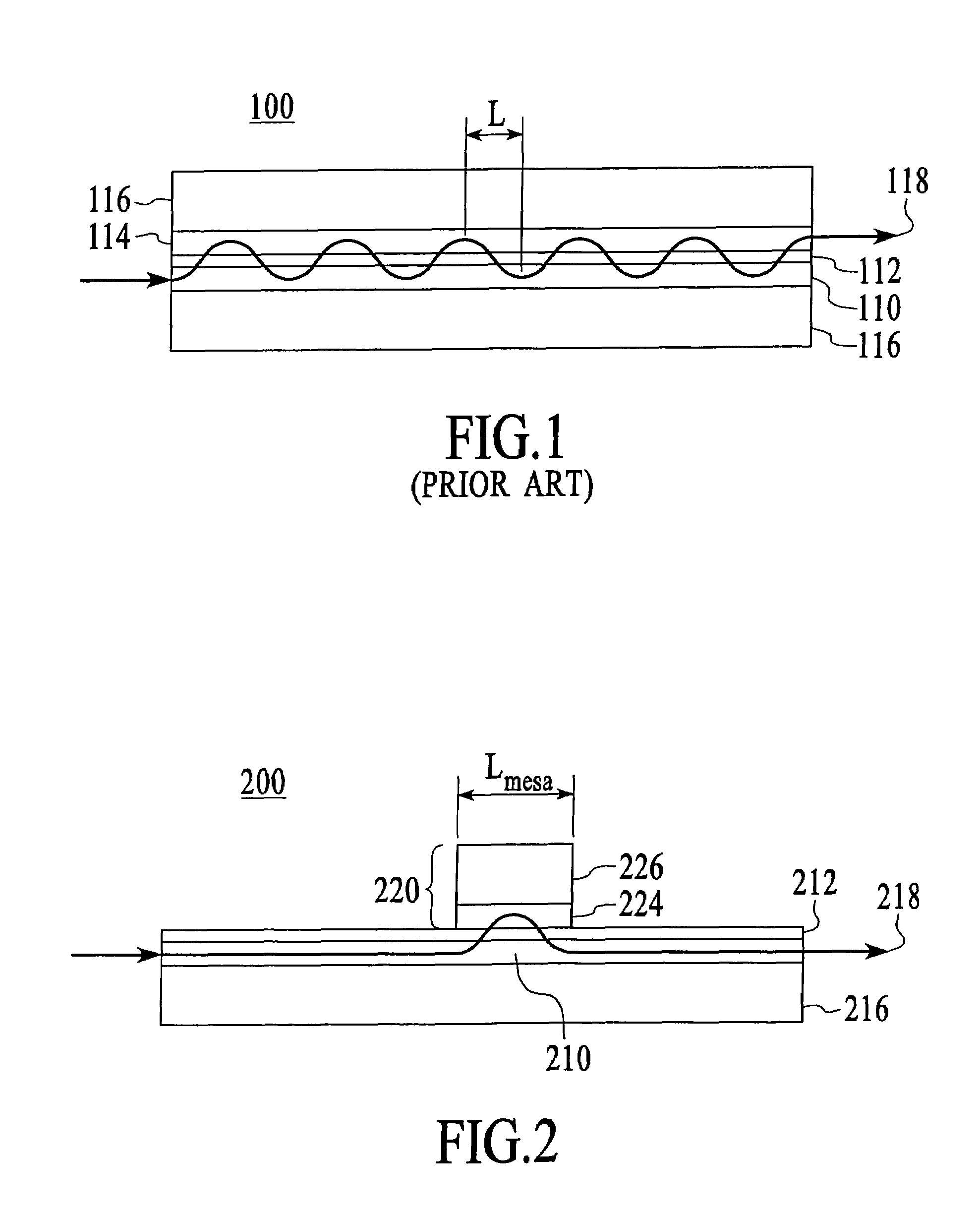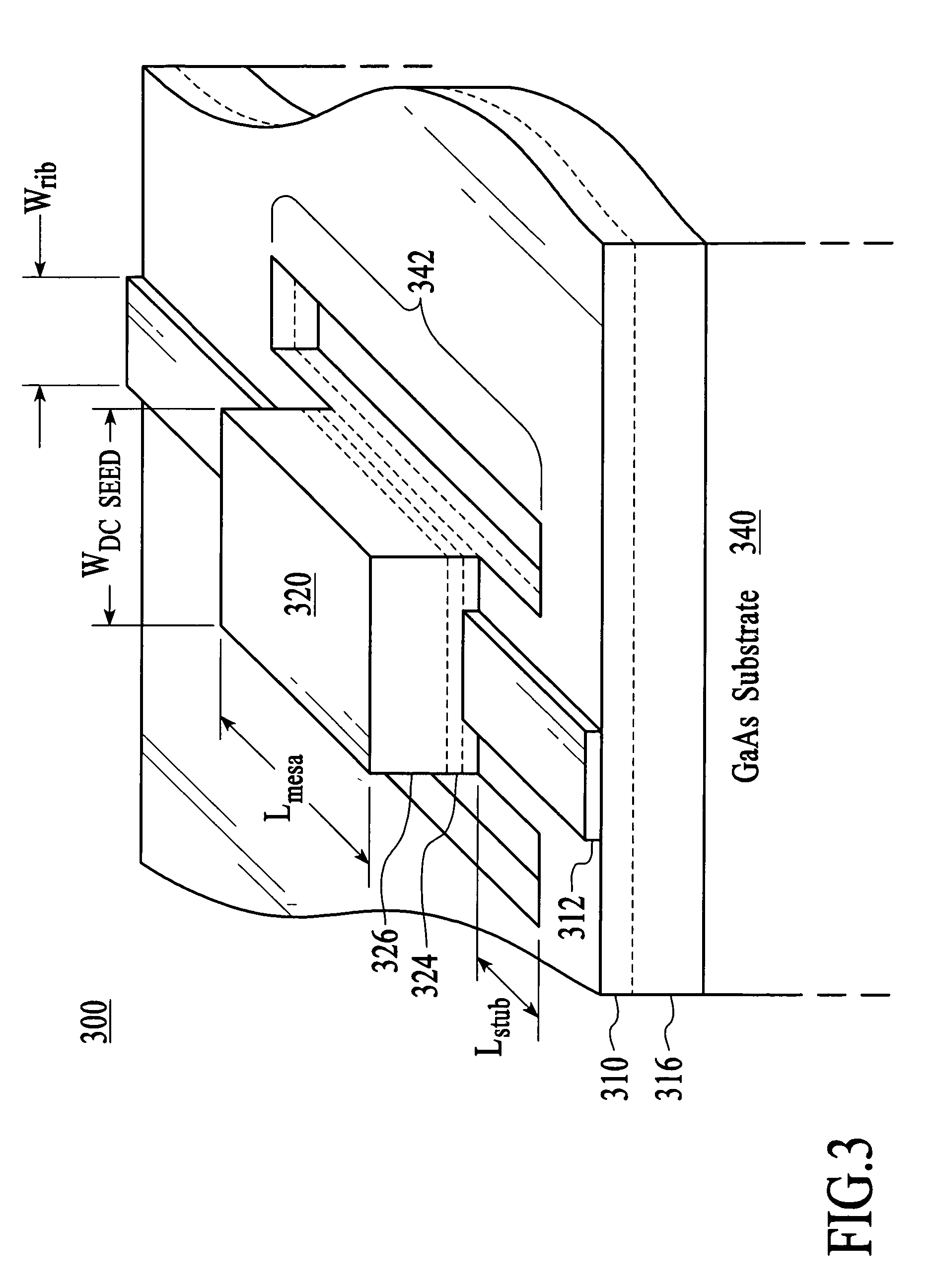Integration of a waveguide self-electrooptic effect device and a vertically coupled interconnect waveguide
- Summary
- Abstract
- Description
- Claims
- Application Information
AI Technical Summary
Benefits of technology
Problems solved by technology
Method used
Image
Examples
Embodiment Construction
[0025]The SEED circuits described herein use the concept of a vertical directional coupler. The principles of vertical directional couplers have been described, for example, by K. Shimomura and S. Arai in “Semiconductor waveguide optical switches and modulators,” Fiber and Integrated Optics, vol. 13, no. 1, pp. 65-100, January 1994, and Shakouri, Liu et al. in “Wafer-fused Optoelectronics for Switching,” Journal of Lightwave Technology, vol. 16, no. 12, pp. 2236-2242, December 1998. Two optical waveguides having similar modal effective refractive indices are positioned atop one another with a spacer layer of waveguide cladding material separating the two guide layers. The device obeys the well-known principal of evanescent coupling of optical power between two similar single-mode optical waveguides.
[0026]FIG. 1 illustrates the principle of evanescent coupling of optical power between two waveguides 110, 114 in a vertical directional coupler 100. In FIG. 1, two single-mode waveguides...
PUM
 Login to View More
Login to View More Abstract
Description
Claims
Application Information
 Login to View More
Login to View More - R&D
- Intellectual Property
- Life Sciences
- Materials
- Tech Scout
- Unparalleled Data Quality
- Higher Quality Content
- 60% Fewer Hallucinations
Browse by: Latest US Patents, China's latest patents, Technical Efficacy Thesaurus, Application Domain, Technology Topic, Popular Technical Reports.
© 2025 PatSnap. All rights reserved.Legal|Privacy policy|Modern Slavery Act Transparency Statement|Sitemap|About US| Contact US: help@patsnap.com



